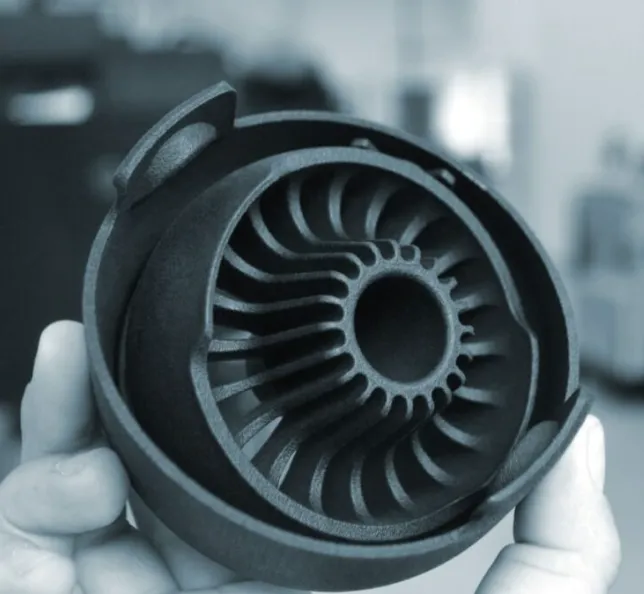Additive manufacturing, also known as 3D printing, has ushered in a new era for manufacturing processes. While industrial production methods have evolved over the centuries, many basic principles have stayed the same. However, with the rise of additive manufacturing, the game has shifted dramatically, offering unique benefits that traditional methods simply can’t match.
Since its emergence in the 1980s, additive manufacturing has experienced rapid technological advancements. Today, it’s a driving force in industries ranging from aerospace to healthcare, offering faster production times, reduced costs, and unprecedented design freedom. In this blog, we’ll explore what additive manufacturing is, how it works, and the six top benefits it offers.
What Is Additive Manufacturing?
Additive manufacturing refers to the process of creating three-dimensional objects by adding material, layer by layer. This contrasts with traditional methods that typically involve subtracting material from a solid block. Central to additive manufacturing is computer-aided design (CAD) software, which guides machines in constructing objects based on digital models. This can range from simple products like toys to complex components used in engineering.
While it may seem complicated, additive manufacturing simplifies the production process by enabling on-demand production and reducing material waste. As the technology evolves, we are seeing it complement traditional methods rather than replace them, offering more options for manufacturers.
Different Types of Additive Manufacturing
Additive manufacturing encompasses several techniques, each suitable for different applications. Here’s an overview of the most common methods:
- Stereolithography (SLA): This is the first-ever 3D printing method, which uses a laser to cure resin layer by layer. It is ideal for precise and intricate parts.
- Fused Deposition Modeling (FDM): In FDM, thermoplastic material is heated and extruded to build an object layer by layer. It’s one of the most common methods used in 3D printing.
- Selective Laser Sintering (SLS): This method uses a laser to fuse small particles of material, like metal or nylon, into a solid object.
- Directed Energy Deposition (DED): DED involves melting materials using lasers or electron beams and depositing them onto a substrate, often used in low-volume production.
- Material Jetting: Similar to inkjet printing, this technique deposits material in precise patterns, using UV light to harden each layer.
- Binder Jetting: This method uses a liquid binder to join particles of material, often metals or ceramics, creating solid objects.
- Sheet Lamination: Layers of materials like paper or metal sheets are bonded together to create an object, often used for architectural models.
Six Key Advantages of Additive Manufacturing
Now that we understand the basics of additive manufacturing, let’s explore the top six advantages it offers:
1. Sustainability
One of the most compelling reasons for businesses to adopt additive manufacturing is its positive environmental impact. On-demand production means only the necessary materials are used, resulting in less waste and energy consumption. This contributes to a reduced carbon footprint, making it a greener alternative to traditional methods.
2. Cost-Effectiveness
Additive manufacturing is often more affordable than traditional manufacturing, particularly for low-volume production runs. With additive manufacturing, businesses only use the amount of material required for each object, reducing waste and preventing overproduction. This makes it an attractive option for businesses looking to cut costs, especially for small-scale production.
3. Customization
One of the most significant advantages of additive manufacturing is its ability to create highly customized parts. Whether it’s tweaking a small component or producing a unique part for a specific need, additive manufacturing makes it easier than ever to achieve tailored designs. This is especially useful for industries where customization is key, such as healthcare and automotive.
4. Rapid Prototyping
Additive manufacturing is a game-changer when it comes to prototyping. The ability to produce prototypes quickly means that businesses can test designs, identify potential flaws, and make adjustments on the fly. This shortens the time-to-market for new products and allows for more iterations in less time, ultimately leading to better results and fewer design errors.
5. Design Freedom and Flexibility
Additive manufacturing offers unmatched design freedom. Traditional manufacturing methods often come with limitations in terms of shape and complexity. With 3D printing, designers can create intricate geometries that would be impossible or prohibitively expensive to produce using conventional methods. This flexibility allows for innovation and new possibilities in product design, such as parts that are both lightweight and structurally sound.
6. Streamlined Production
Unlike traditional manufacturing, which often requires large inventories and complex supply chains, additive manufacturing simplifies production. By consolidating parts into a single component, businesses can reduce inventory, cut down on logistical costs, and minimize production delays. This leads to a more efficient and cost-effective process overall.
Conclusion
Additive manufacturing is transforming the way products are designed and produced. From reducing waste and costs to enabling rapid prototyping and customization, its advantages are clear. As the technology continues to advance, it’s likely that more industries will adopt 3D printing techniques to meet their manufacturing needs. By offering greater flexibility, design freedom, and efficiency, additive manufacturing is setting the stage for the future of production.







